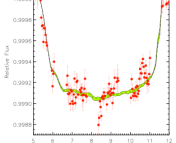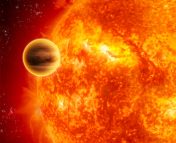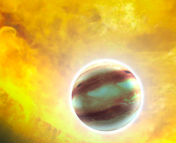Title: An enduring rapidly moving storm as a guide to Saturn’s Equatorial jet’s complex structure
Authors: A. Sánchez-Lavega, E. García-Melendo, S. Pérez-Hoyos, R. Hueso, M. H. Wong, A. Simon, J. F. Sanz-Requena, A. Antuñano, N. Barrado-Izagirre, I. Garate-Lopez, J. F. Rojas, T. del Río-Gaztelurrutia, J. M. Gómez-Forrellad, I. de Pater, L. Li & T. Barry
Status: Published in Nature Communications
On Earth, jet streams, the massive air currents that circulate around the planet, are a key player in weather patterns. While essential to our climate, they are not unique to us – turns out other planets have them too. New research on Saturn’s jet streams reveal just how dynamic and gigantic they are.
The jet streams we are most familiar with, are caused by solar radiation heating Earth’s atmosphere combined with the Coriolis effect caused by the planet’s rotation. These jet streams are well studied and their models help us predict weather. The mechanism behind the jet streams on Saturn, however, are unknown. No one is sure if they are shallow or deep, which could help tell if they are caused by solar heating, like on Earth, or by internal energy, due to heating from the planet.
The jet streams on Saturn are in proportion to it’s size. Gusting at up to 1650km/hr, winds in the jet stream can reach speeds thirteen times that of hurricane force winds on Earth. Saturn, along with Jupiter, are unique in our solar system – their jet streams along the equator blow West to East, unlike the other planets which have a westward direction.
In 2015, the Spanish led team of astronomers observed Saturn with the Hubble Space Telescope and a telescope at the Calar Alto Observatory. In order to track the jet stream’s movement, the team watched a giant white spot in the equatorial jet stream. The spot, essentially a big clump of clouds, was a whopping 7,000km across – about the distance from Berlin to Beijing. Because it was so big and long lasting, the astronomers were able to track it’s motion. Taking careful measurements of the position of the spot, they determined its speed to within one meter per second. Giant spots like these are uncommon on Saturn – only six have been observed in the past 150 years.
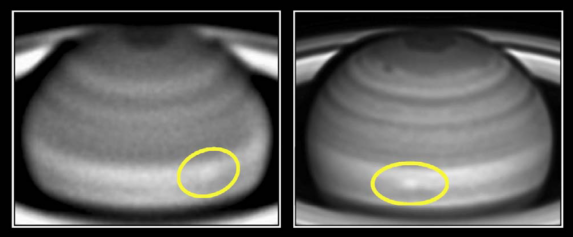
Figure 1. The white spot the astronomers tracked are circled in yellow in these images from June 23 (left) and July 13 (right) 2015.
Using Hubble observations taken at different wavelenghts from ultraviolet to the infrared (225-937nm), the astronomers looked into different depths of the clouds in the jet stream. They found that the wind speeds were dramatically higher deeper into the atmosphere. While the upper reaches of the atmosphere had peak speeds around 1,100km/hr, 150km deeper they reached up to 1,650km/hr (for comparison, most commercial jet planes only reach speeds of 885km/hr).
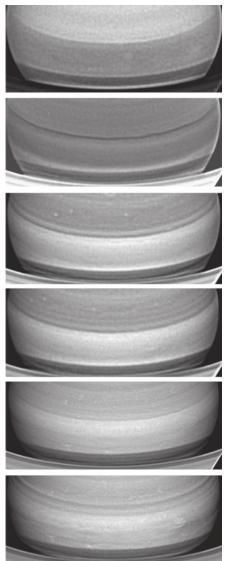
Figure 2. A look at different depths of Saturn’s atmosphere. The top image is at the surface and each lower image shows a deeper and deeper layer of the atmosphere.
Compared with historical data, the researchers found considerable variation in the jet stream’s strength. The speed they measured was over three times stronger than observations taken by the Cassini mission a few years before. They speculate this is likely due to the presence of clouds in the upper atmosphere that can block solar radiation as well as shadows cast on the surface of Saturn from it’s rings.
The storms and layers seen in Saturn’s jet stream are similar to those on Earth and other planets. Studying the different conditions on Saturn helps in modeling and understanding jet streams on different planets, which allows us to learn about the weather patterns and climates on other worlds.


